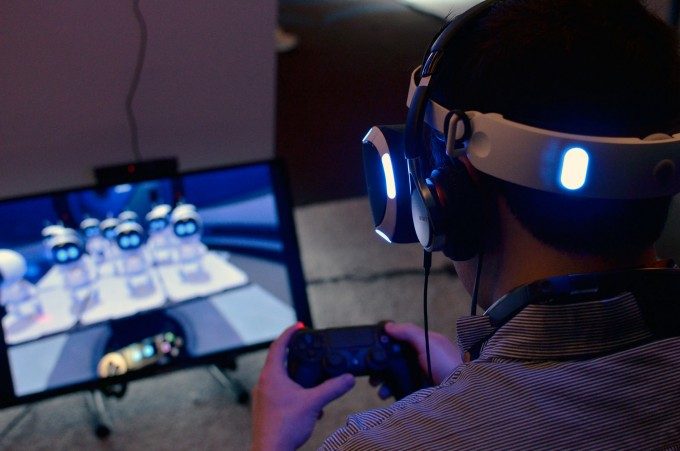Sony wowed us back in March when they announced a 120Hz display mode on the latest version of the PlayStation VR headset (formerly known as ‘Project Morpheus’), the fastest available on any of the ‘big three’ consumer VR headsets soon to hit the market. Now the company has confirmed that a new 90Hz display option will be available, giving developers more flexibility for their target framerates.
Alongside the announcement that dropped the codename ‘Project Morhpeus’ for the official ‘PlayStation VR’ product name came a new set of specifications that offered a tweak to what had been formerly revealed about the headset’s capabilities: a new 90Hz display mode will be made available, in addition to the 120Hz mode that had previously been revealed.


The upside of a faster refresh rate is that the system can display frames more quickly and with lower latency to the user, which has been found to increase immersion and reduce the likelihood of nausea (Oculus thinks that 90Hz is the minimum bar for Presence). The downside is that taking advantage of a higher refresh rate means rendering the VR experience at a higher framerate, which can only be achieved by either improving the hardware performance or further optimizing the experience.
Given that PlayStation VR is tied to Sony’s late 2013 game console, the PlayStation 4 (viewed as underpowered compared to the PC systems that would drive other headsets), it was a big surprise to see the company coming out of the gates with the highest available refresh rate of any of the ‘big three’ consumer VR headsets.
See Also: Anyone Who Says ‘You Can’t Do VR on Console’ Hasn’t Tried Sony’s 2015 Morpheus Prototype


To return the collectively dropped jaw of developers who suddenly had to consider doubling the efficiency of their PlayStation VR games to hit 120Hz, Sony went on to explain that two display modes would be available: one where the game would render at 60Hz and be bumped up to 120Hz for display using an using an interpolation method called ‘asynchronous reprojection’. The other mode would allow developers—who wanted to take advantage of it—to render and display natively at 120Hz.
Now Sony has confirmed that PlayStation VR will have a third, native 90Hz mode. This will offer developers, who want the benefits of faster native rendering, a new middle option for their target framerate.
See Also: Hands-on – Sony’s 120Hz Morpheus Demo, ‘Magic Controller’, and ‘Bedroom Robots’
A representative from Sony working closely with PlayStation VR confirmed to Road to VR that the new 90Hz display mode does not come from a new display, but rather new firmware. The rep told us that they expect the 60Hz rendering + 120Hz reprojection mode to be a “very popular choice,” though the native 90Hz and 120Hz options will be there for developers who want to push the limits; it also affords good headway for future growth as game developers get increasingly adept at optimizing their virtual reality experiences for the PS4.
So you may be wondering, as we did, whether or not developers would be able to mix and match display modes: for instance, render at 60Hz and reproject to 90Hz, or render at 90Hz and reproject to 120Hz.
It turns out that going from 60Hz » 120Hz reprojected has no downsides over going from 60Hz » 90hz reprojected, so a 60Hz » 90Hz reprojected mode isn’t supported. As for 90Hz » 120Hz, the reprojection technique works best when using exact multiples of frames (like 60Hz to 120Hz), so 90Hz native display is actually preferable to 90Hz » 120Hz reprojection, according to the Sony rep.
By our understanding, that leaves three display modes for developers working on PlayStation VR:
- 60Hz rendering » 120Hz display reprojected
- 90Hz rendering » 90Hz display
- 120Hz rendering » 120Hz display

